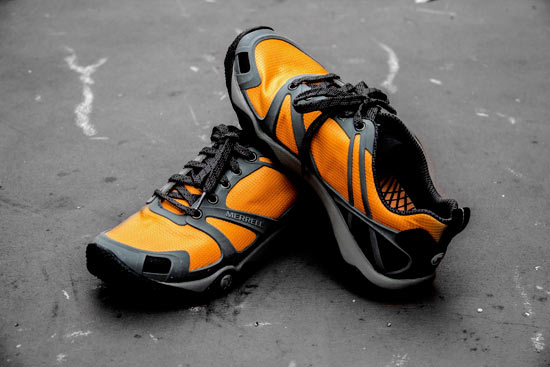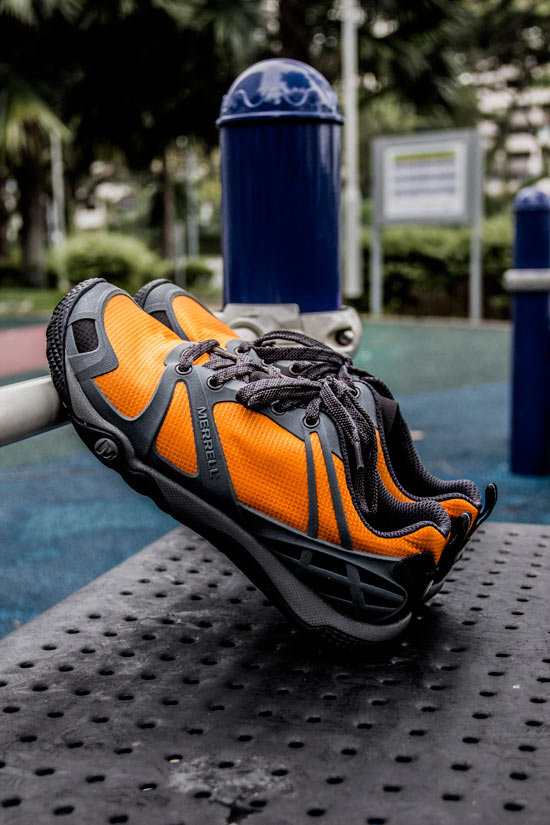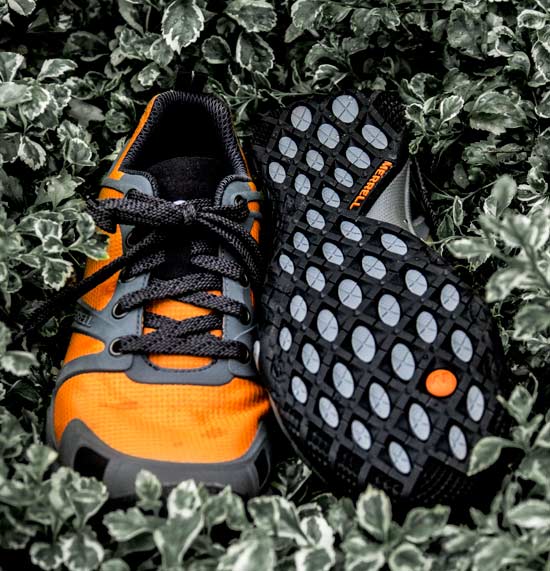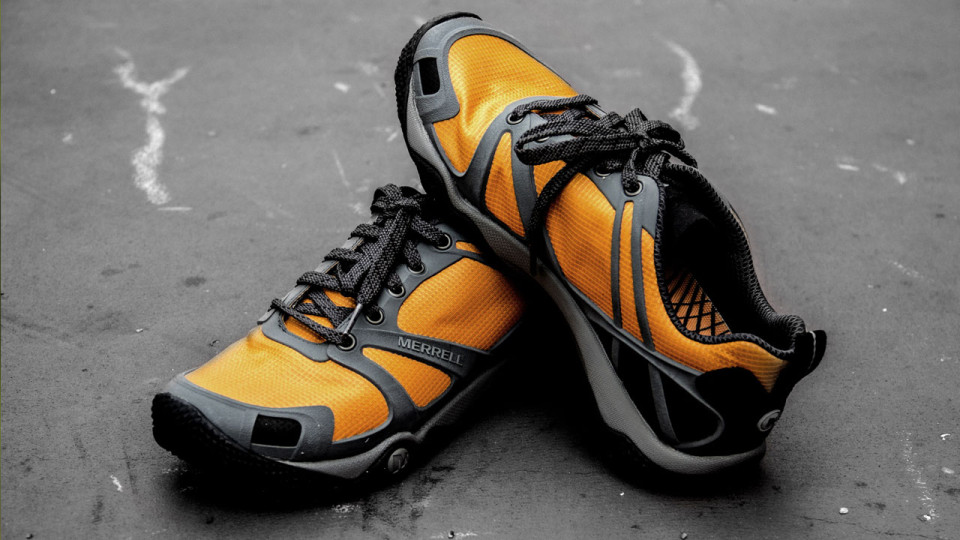If you’ve been around the running community for any length of time, you would have heard a lot about Merrell. They’ve been around for a while, and their ‘Trail Glove’ running shoe is quite a sensation in minimalist running circles. Hoping to expand on the success of the Glove, Merrell has recently introduced its new M-Connect series, which aims to provide minimalist-inspired footwear for a variety of activities. One of the most talked-about styles in that series is the new Proterra Sport.
The Proterra Sport bills itself as a new type of shoe. Their goal was to build a kind of hybrid between a lightweight hiking shoe and a minimalist running shoe. The question is: Did they succeed?
First Impressions
There’s a lot to like about the Proterra Sport. With four different colors to choose from, it’s certainly an attractive shoe. It has a much lighter weight and lower profile than a standard hiking shoe, but still provides great traction and support. Where most minimalist shoes can be a bit lacking on loose rocks and mud, the Proterra Sport handles difficult terrain easily, while simultaneously offering real protection against sharp stones and other trail hazards.
The fit of the shoe itself is fairly comfortable. The toebox in particular felt nice and roomy, a nice departure from other minimalist-style shoes, which can tend to be a bit narrow. The slight four-millimeter drop is comfortable and helps with proper posture and foot strike. The Proterra Sport comes with a soft breathable upper too, which adds to the comfort level in warm weather. The mesh also makes it dry a lot faster after splashing through a stream.

Merrell has bragged a bit about some of the technological upgrades that were put into the Proterra Sport. First, the sole doesn’t look like a normal trail sole. It uses their new ‘inverted lug’ design, which means that instead of having nubs jutting out of it for traction, it itself is a thick rubber sole covered in holes that looks kind of like a honeycomb. It sounds strange, but it really helps out. Especially on rocks, the sole feels almost sticky. Their other high-tech bragging point is the molded TPU arch shank, which is a standard hiking boot feature but not one often seen on running shoes. They say that this is for enhanced stability, and it does provide that, but I’m not sure it was quite as good an idea as the new sole.
First Go!
While certainly lighter than hiking boots, the Proterra Sport is significantly heavier than most running shoes. At almost a pound and a half (680g), it’s triple the weight of minimalist models like the New Balance Minimus or Merrell’s own Trail Glove. The weight might not seem like a big deal at first, but you’ll definitely feel it after a few miles.

The other major problem with this shoe is the shank. While this is certainly useful for hiking, it’s a real problem in something billed as a running shoe. The shank impairs flexibility by forcing the back and front of the shoe to move as a unit. This can cause blistering on the back of the foot and make it difficult to grip uneven terrain. This might loosen up with wear, but on a first test, it seems like a real deal-breaker for a running shoe.
The Proterra Sport has a couple other minor problems. First, the cushioning is a little strange. It’s thick without being soft, so it makes it hard to feel the ground without offering compensation in terms of added comfort. Second, the inverted lug sole, while great on rocks, tends to pick up mud and sand in wet weather. This could harm traction if you run extensively in muddy weather without stopping to knock the dirt out.

Overall, the Merrell Proterra Sport is great as a hiking shoe. It’s light and unobtrusive without making any sacrifices in terms of traction or protection. Any minimalist-minded hiker would buy a pair of these shoes in a heartbeat for long hikes in most weather and terrain. As a running shoe, though, there are just too many trade-offs to make it really worthwhile.





